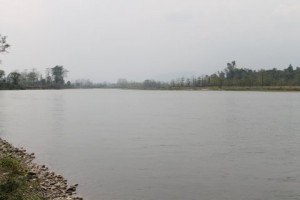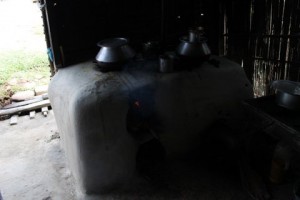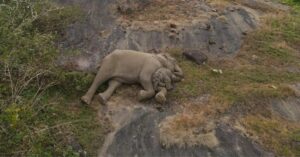TBI Travel: Flowing With The Jia-Bharali
Meena Vaidyanathan continues her exploration of India’s little-known rivers to enlighten and enchant our readers with the little secrets they hold. In the second post in this series (read the
Meena Vaidyanathan continues her exploration of India’s little-known rivers to enlighten and enchant our readers with the little secrets they hold. In the second post in this series (read the first one here), she gets lured by the lilting beauty of the Jia-Bharali in Assam, all along the Nameri National Park.
The promise of impending showers didn’t deter our motley crowd from picking up our backpacks and campstools from setting out to explore the part of the Kameng river that flows in Assam.

The Kameng has its origins in the glaciers of Tawang district of Arunachal Pradesh, close to the Indo-Tibet border. It flows through Bhalukpong in Arunachal Pradesh and Sonitpur district of Assam, before joining the Brahmaputra at Tezpur, just east of the Kolia Bhomora bridge. The Kameng is a fascinating river with surprisingly consistent rapids, deep gorges, pristine camps and well kept old forests around it.
We decided to explore along the Jia-Bhorelli as the Kameng is called in Assam, and visit the Nameri National Park. The Nameri reserve is on the Tezpur-Bomdila highway, passing through the quaint town of Balipara. The “non-existent” road from Tezpur is treacherous to say the least, and people with bad backs won’t find the 40-odd km stretch of the road to the river around the reserve exactly pleasant. But the beautiful people enroute who are happy to serve fresh tea made with goat’s milk, the simplicity of the lifestyle of the local communities, the rich vegetation and the calling of the river that can be breathtakingly calm and fiery at the same time can be very addictive and help one overcome the pain of the drive. Funnily enough, we also found out from the locals that the river’s original name Bharali, was spelt Bhorelli by the Britishers and it has stuck since then.

We must have driven about 10 kms ahead of the Nameri reserve when we spotted a stretch of the river that seemed pure bliss. The water, crystal clear, almost a rarity in many parts of India, and cold enough to refresh the most tired soul, was just what we needed. Our group was made up of people ranging from age one through forty, and the cool waters managed to get everyone of us to clap in glee! The river served as a border to
the park, and we could see the thick forest with tall trees to the other side of the river. As we walked on the shore, a couple of people in a raft with some angling gear arrived floating down with the current, probably ending their fish hunt. It was heartening to note that the community around the area most famous for “Mahaseer” angling is amazingly passionate about breeding the dwindling golden mahaseer, even if the only aim is to have more of them to catch!! Mahaseer, known as the tiger of Indian rivers, is best spotted in the winter months, we learnt. The breeding programme is spearheaded by the Assam (Bhorelli) Angling and Conservation Association that also runs the eco-camp in the reserve. It was ironic that the angling association that is run in such close cooperation with the locals is still called Bhorelli!

The river front was the perfect picnic spot and it was arduous to get ourselves out of that blissful state of being. But we were eager to learn more about the eco-camp located in the Potasali village nearby, which also happens to be the only place to stay anywhere close to Nameri National Park. It was a delightful place to be in, located in a quiet village at the border of the park, not too far from the river. We had lunch at the camp, which was a simple fare using local produce. The local community takes great pride in participating in the activities of the camp, and the acknowledgement of the role local communities play in keeping the ecosystem of the place alive was displayed for all to see.
With an area of 213 sq. km., Nameri is the third largest national Park of Assam. Nameri was set up as a sanctuary in 1985 and in 1998 it was officially established as a national park. By the time we finished our lunch and spent some time relaxing outside the tents taking in the sights and smells, a heavy downpour decided for us that it was time to leave and we had to choose another day to explore the reserve.

As we pulled out our jeeps from the eco-camp, the words in the display board at the camp’s restaurant that captured the essence of how beautifully one could live in harmony with nature and of the usually unsung local community in preserving the delicate ecosystem, was all that played in my head –
Lobjek, my dear friend, this is about you, the “bushman of the Bhorelli”. Your forte was not restricted to the river but went beyond. A vanishing handful of your tribe, you not just gave us joy and excitement but taught us so much about ourselves. In return, all you wanted was to sit around a log fire with a glass of lom (rum) and exchange stories of the day gone by! Your footprints on the sand may have gone with you, but not the impressions you have left in our hearts and souls. For as long as the breeze blows and creates a rustle in the trees and a ripple on the river, a Mahaseer leaps. You live. You are Nature.
This story made me
- 97
- 121
- 89
- 167
Tell Us More
We bring stories straight from the heart of India, to inspire millions and create a wave of impact. Our positive movement is growing bigger everyday, and we would love for you to join it.
Please contribute whatever you can, every little penny helps our team in bringing you more stories that support dreams and spread hope.



















